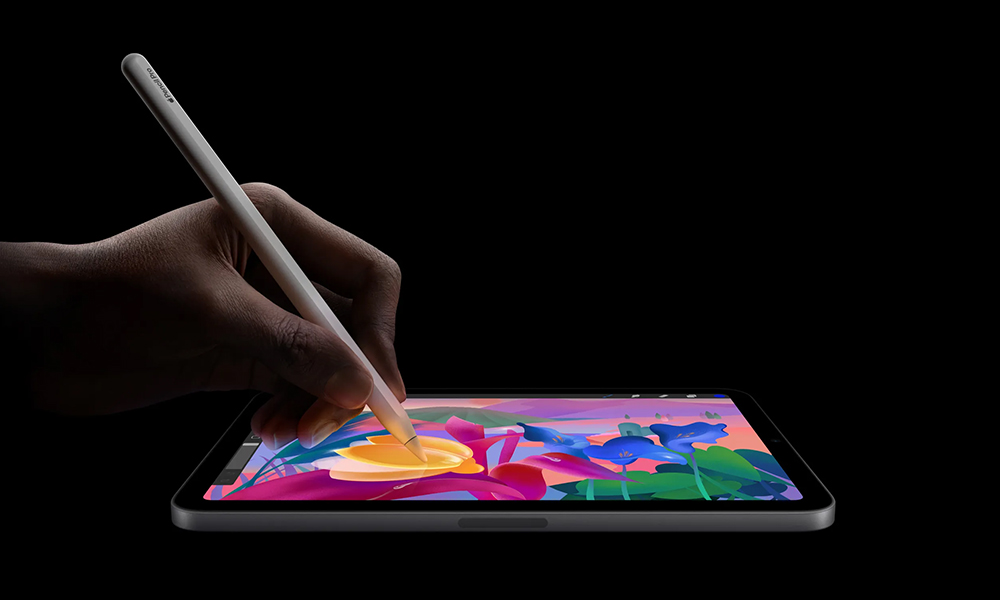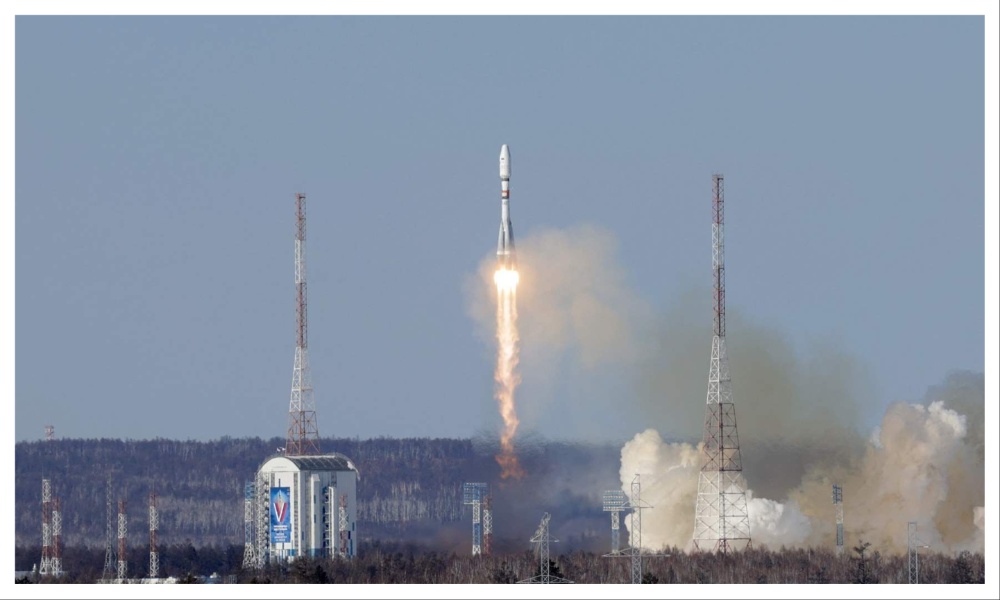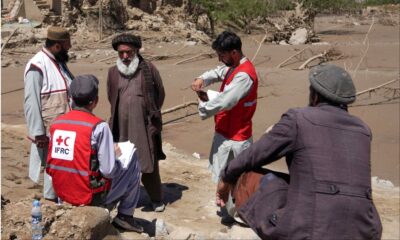Science & Technology
Scientists document how space travel messes with the human brain

Space can be an unfriendly place for the human body, with microgravity conditions and other factors tampering with our physiology, from head to toe - head, of course, being a primary concern.
A new NASA-funded study provides a deeper understanding of the issue. Researchers said on Thursday that astronauts who traveled on the International Space Station (ISS) or NASA space shuttles on missions lasting at least six months experienced significant expansion of the cerebral ventricles - spaces in the middle of the brain containing cerebrospinal fluid, Reuters reported.
This colorless and watery fluid flows in and around the brain and spinal cord. It cushions the brain to help protect against sudden impact and removes waste products.
Based on brain scans of 30 astronauts, the researchers found that it took three years for the ventricles to fully recover after such journeys, suggesting that an interval of at least that duration would be advisable between longer space missions.
"If the ventricles don't have sufficient time to recover between back-to-back missions, this may impact the brain's ability to cope with fluid shifts in microgravity. For example, if the ventricles are already enlarged from a previous mission, they may be less compliant and/or have less space to expand and accommodate fluid shifts during the next mission," said University of Florida neuroscientist Heather McGregor, lead author of the study published in the journal Scientific Reports.
Age-related ventricular enlargement - caused not by microgravity but by brain atrophy - can be associated with cognitive decline.
"The impact of ventricular expansion in space travelers is not currently known. More long-term health follow-up is needed. This ventricular expansion likely compresses the surrounding brain tissue," University of Florida applied physiology and kinesiology professor and study senior author Rachael Seidler said.
The absence of Earth's gravity modifies the brain.
"This seems to be a mechanical effect," Seidler said. "On Earth, our vascular systems have valves that prevent all of our fluids from pooling at our feet due to gravity. In microgravity, the opposite occurs - fluids shift toward the head. This headward fluid shift likely results in ventricular expansion, and the brain sits higher within the skull."
The study involved 23 male and seven female astronauts - average age around 47 - from the U.S., Canadian and European space agencies. Eight traveled on space shuttle missions of about two weeks. Eighteen were on ISS missions of about six months and four on ISS missions of about a year.
Little to no ventricular volume change occurred in astronauts after short missions. Enlargement occurred in astronauts after missions of six months or longer, though there was no difference in those who flew for six months compared to those who did so for a year.
"This suggests that the majority of ventricle enlargement happens during the first six months in space, then begins to taper off around the one-year mark," McGregor said.
The fact that enlargement did not worsen after six months could be good news for future Mars missions on which astronauts may spend two years in microgravity during the journey.
"This preliminary finding is promising for astronaut brain health during long-duration missions, but it's still important that we examine MRI data from a larger group of astronauts and following even longer missions," McGregor said.
The absence of enlargement following short flights was good news for people who may consider short space tourism jaunts, Seidler added, as that industry develops.
Microgravity conditions also cause other physiological effects due to the reduced physical load on the human body. These include bone and muscle atrophy, cardiovascular changes, issues with the balance system in the inner ear and a syndrome involving the eyes. Elevated cancer risk from the greater exposure to solar radiation that astronauts may encounter the further they travel from Earth is another concern.
Science & Technology
Russia fines Google more than the world’s total GDP over YouTube bans

Russia has fined Google $2.5 decillion after the US tech giant took action against pro-Kremlin TV channels on YouTube following Moscow’s invasion of Ukraine.
Russia imposed a daily fine four years ago - a fine that has since swelled to an unprecedented level - ($20,000,000,000,000,000,000,000,000,000,000,000 - a 33-digit figure).
To put this into perspective, global GDP reaches an estimated $110 thousand billion (12-digit figure), according to the IMF.
Speaking to Russia’s TASS news agency, one expert, Roman Yankovsky from the HSE Institute of Education, said Google “clearly will not pay this penalty, and the Russian Federation will not be able to recover this money from the company."
Euronews reported that a short calculation shows that he is right.
Google's holding company, Alphabet, has a market capitalisation of slightly more than $2 trillion. Even with earnings of $80.54 billion from the last quarter, the tech giant doesn’t seem to be able to afford to pay the fine.
Google first barred pro-Moscow channel Tsargrad TV, which is owned by oligarch Konstantin Malofeev, four years ago.
At the time, Google was fined a daily penalty of 100,000 roubles and warned that amount would double every 24 hours if it went unpaid.
The original fine has been compounded by further penalties after Google eventually blocked a total of 17 Russian TV channels as a result of international sanctions, The Telegraph reported.
The tech giant now owes a staggering $2.5 decillion.
Science & Technology
Apple launches new iPad mini with AI features
Apple said it would roll out the first set of AI features in the U.S. version of the English language this month through a software update with iPadOS 18.1.

Apple on Tuesday launched its new generation of the iPad mini packed with AI features including writing tools and an improved Siri assistant, as the iPhone maker races to boost its devices with artificial-intelligence capabilities, Reuters reported.
The new iPad mini is powered by Apple's A17 Pro chip, which is used in the iPhone 15 Pro and Pro Max models. With a six-core central processing unit, the A17 Pro would boost CPU performance by 30% compared to the current generation iPad minis and is central to running Apple Intelligence, Apple's AI software.
Apple said it would roll out the first set of AI features in the U.S. version of the English language this month through a software update with iPadOS 18.1.
The features will be available for iPads with A17 Pro or M1 chips and later generations, Apple said, adding it will roll out additional features including image-generation tools, Genmoji and ChatGPT-powered capabilities over the next several months, read the report.
Apple in September unveiled its long-awaited, AI-boosted iPhone 16 lineup, but with the AI features still in test mode, the company failed to excite some investors while early sales data raised some questions around demand.
Still, research firm Canalys on Monday said the iPhone 16 would help Apple's sales in the fourth quarter and drive momentum into the first half of 2025, after Apple reached a record high third-quarter shipments.
The iPad mini, starting at $499, is available for pre-orders starting on Tuesday and will begin arriving to customers and Apple store locations next week, Apple said.
Science & Technology
Iran sends satellites to Russia for rocket launch
In September, Iran carried out its second satellite launch this year using a rocket built by its Revolutionary Guards

Iran has sent two locally made satellites to Russia to be put into orbit by a Russian space vehicle, the semi-official news agency Tasnim reported on Saturday, in the latest space cooperation between the two U.S.-sanctioned countries.
The development of Kowsar, a high-resolution imaging satellite, and Hodhod, a small communications satellite, is the first substantial effort by Iran's private space sector, the report said.
Russia sent Iranian satellites into orbit in February and in 2022, when U.S. officials voiced concern over space cooperation between Russia and Iran, fearing the satellite will not only help Russia in Ukraine but also help Iran monitor potential military targets in Israel and the wider Middle East, Reuters reported.
Kowsar could be used in agriculture, natural resource management, environmental monitoring, and disaster management, Tasnim said.
Hodhod is designed for satellite-based communications and could be used in remote areas with little access to terrestrial networks.
In September, Iran carried out its second satellite launch, this year using a rocket built by its Revolutionary Guards.
The launch came as the United States and European countries accuse Tehran of transferring ballistic missiles to Russia that could be used in its war with Ukraine. Iran has denied this.
-

 Business5 days ago
Business5 days agoPrivate sectors of Afghanistan, Kazakhstan sign contracts worth $100 million
-

 Sport5 days ago
Sport5 days agoRashid Khan retained by Gujrat Titans ahead of IPL 2025 auction
-

 Latest News5 days ago
Latest News5 days agoDAB plans to set up electronic payments in Afghanistan
-

 Regional5 days ago
Regional5 days agoIran preparing strike on Israel from Iraqi territory within days, Axios reports
-

 Regional5 days ago
Regional5 days agoSeven killed, dozens injured in blast in Pakistan’s Balochistan province
-

 Sport3 days ago
Sport3 days agoAfghanistan to tour Zimbabwe for all-format series
-

 Latest News4 days ago
Latest News4 days agoUN expert calls for comprehensive, rights-focused action plan for Afghanistan
-

 Latest News4 days ago
Latest News4 days agoUzbekistan, EU envoys meet to discuss Afghanistan
























